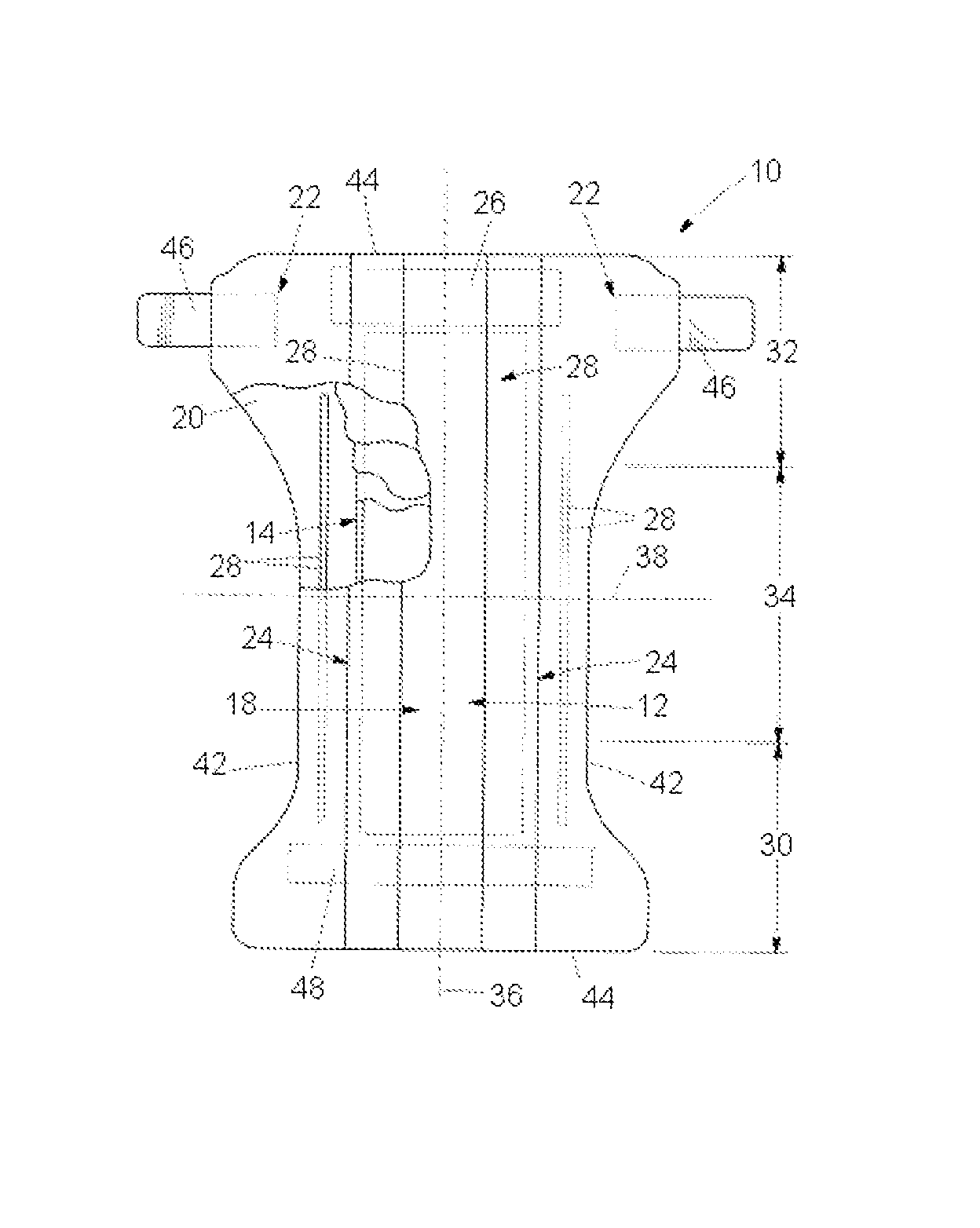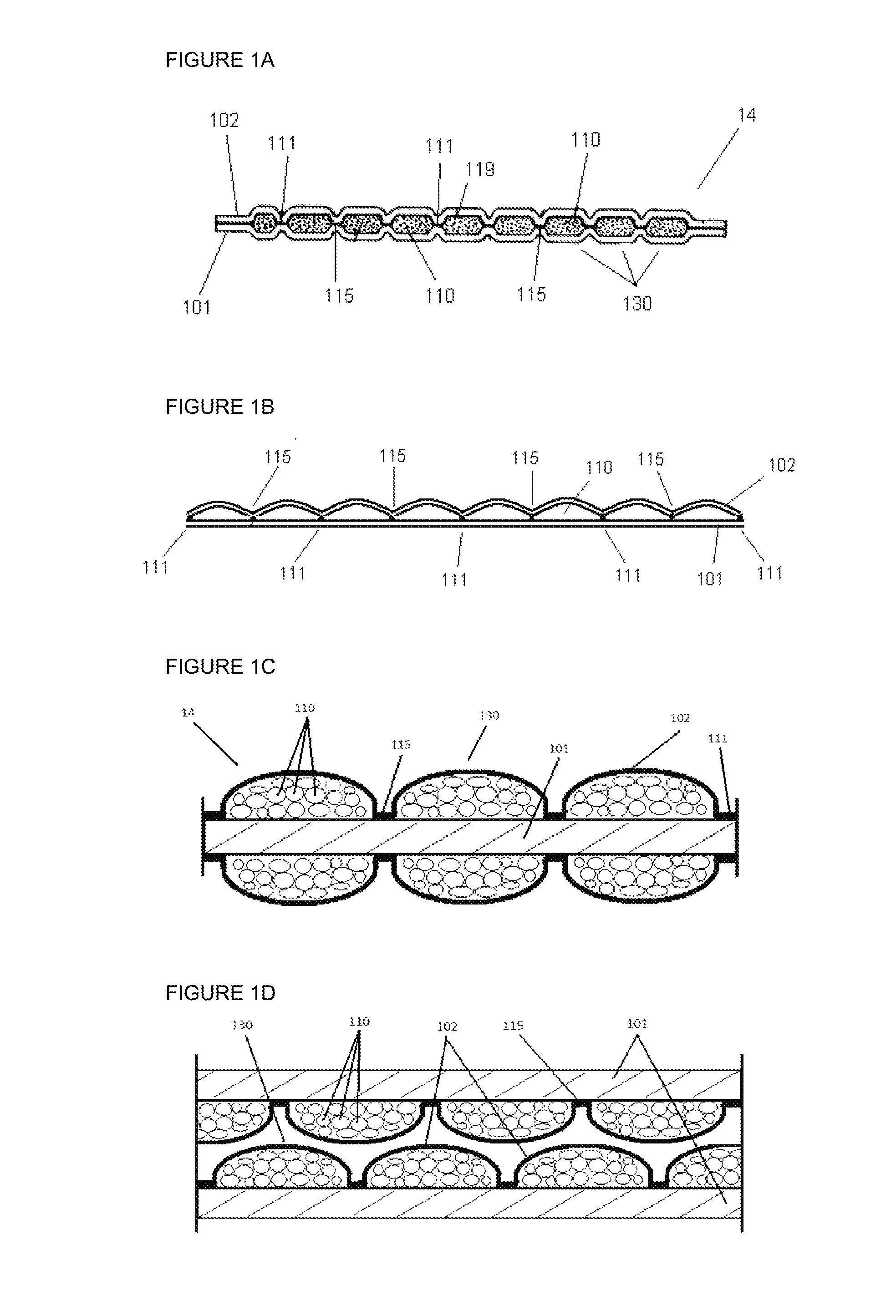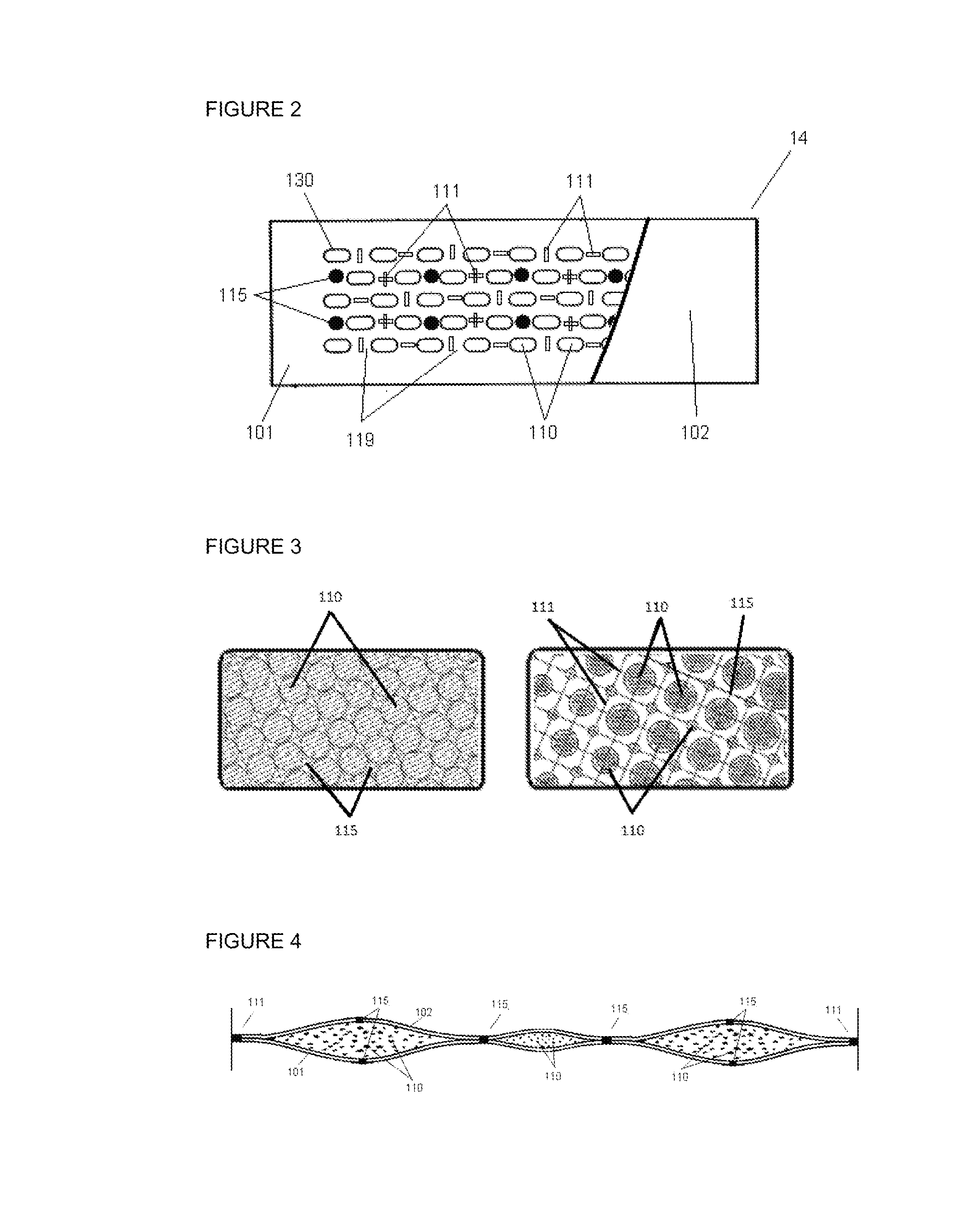Method and apparatus for producing composite structure
a composite structure and composite material technology, applied in the field of composite structure production methods and equipment, can solve the problems of loss of functional performance characteristics, inability to absorb not necessarily good at absorbing and distributing liquid when the absorbent article is actually being used, so as to achieve easy spread, improve distribution and transport, and reduce rewet value
- Summary
- Abstract
- Description
- Claims
- Application Information
AI Technical Summary
Benefits of technology
Problems solved by technology
Method used
Image
Examples
Embodiment Construction
[0080]The present invention relates to a method and apparatus for creating composite structures comprising particulate material, preferably absorbent particulate material such as absorbent polymer materials, more preferably absorbent particulate polymer material; preferably clustered, enveloped and / or immobilised in between a carrier layer and auxiliary layer, possibly via primary and secondary attachment means, so as to form discrete and predetermined pocketing patterns of particulate material sheets for use in absorbent products, preferably a disposable absorbent article from the personal hygiene industry, such as feminine hygiene garments, baby diapers and pants and adult incontinence garments.
[0081]Unless otherwise defined, all terms used in disclosing the invention, including technical and scientific terms, have the meaning as commonly understood by one of ordinary skill in the art to which this invention belongs. By means of further guidance, term definitions are included to b...
PUM
| Property | Measurement | Unit |
|---|---|---|
| diameters | aaaaa | aaaaa |
| diameters | aaaaa | aaaaa |
| surface area | aaaaa | aaaaa |
Abstract
Description
Claims
Application Information
 Login to View More
Login to View More - R&D
- Intellectual Property
- Life Sciences
- Materials
- Tech Scout
- Unparalleled Data Quality
- Higher Quality Content
- 60% Fewer Hallucinations
Browse by: Latest US Patents, China's latest patents, Technical Efficacy Thesaurus, Application Domain, Technology Topic, Popular Technical Reports.
© 2025 PatSnap. All rights reserved.Legal|Privacy policy|Modern Slavery Act Transparency Statement|Sitemap|About US| Contact US: help@patsnap.com



